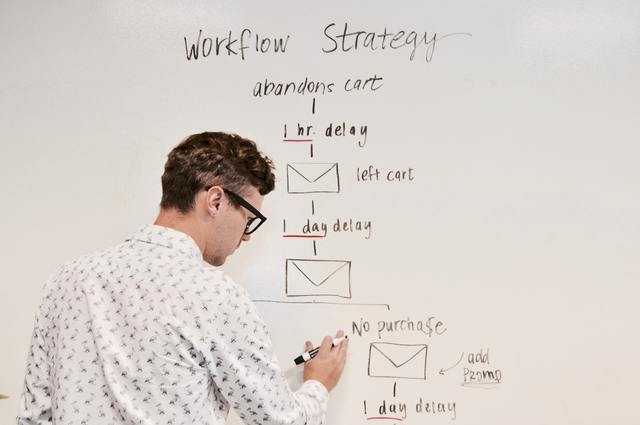With a $39 return on every $1 invested, email marketing is one of the most effective ways to reach out to your audience. However, it would be a mistake to send the same emails to your entire group of leads.
You want to make sure you’re targeting each sub-group of your broader audience with the content that’s most likely to turn them into one of your customers.
That’s why you should look into audience segmentation for email marketing if you haven’t done so already. It’s an effective way to get more out of your campaigns.
Keep reading to learn more about this strategy and figure out how to improve your cold emails and find new opportunities.
The basics of audience segmentation for email marketing
What it is
Audience segmentation is another way of splitting an audience into groups based on shared characteristics. The specific shared characteristics that you use to do this can vary based on the nature of your business and its goals.
We’ll dive deeper into the various types of segmentation you can use for email marketing in a later section.
Why companies do it
Companies use audience segmentation for email marketing because it helps them effectively target their email campaigns. And when cold emails are relevant to a person’s interests, they’re much likelier to open them.
Benefits of segmenting warm and cold emails
Increased rates of response
When you send out more targeted emails, you can expect to get a higher response rate. The reasoning for this makes sense: people are more likely to open up and interact with content directly related to their goals. Segmenting your audience helps you send out that kind of content.
Less negative feedback
People get frustrated with cold emails. This can be a problem for brands because sending too many cold emails to a lead who doesn’t want them could lead to a negative outlook. That’s the last thing you want to happen when investing time and resources into a marketing campaign.
It’s another benefit of segmenting your email campaigns: You decrease the cold emails you send.
Decreased marketing costs
Using an audience segmentation strategy for your email marketing campaigns could also reduce your overall marketing expenditures.
That’s because segmented campaigns tend to be more effective at achieving their stated purpose. And if you boost the effectiveness of your campaigns, you won’t have to spend as much on marketing to hit your target numbers.
Improved conversion rates
Many companies see a boost in their conversion rates after adopting a segmentation approach. 96% of B2B marketers say that segmentation is the most valuable method for improving conversion rates.
That means if you’re trying to achieve higher conversion rates and you aren’t already using an email marketing segmentation strategy, it might be time to rethink your approach.

How to segment your audience for email marketing
Geographic
Geographic segmentation is one of the most common ways to split your email list. It’s straightforward: You base the emails you send to a person on where they’re located.
This strategy is best for companies that sell products or services with location-based features. You can use it to ensure that your cold emails are sent to leads who live in places that align with the correct version of your product.
Psychographic
You also might try segmenting your email list through psychographic means. This type of segmentation occurs based on the psychological factors that motivate a consumer’s behavior. It’s a list that can include interests, lifestyle, and values.
This is a type of audience segmentation that anyone can use to find new opportunities. Regardless of the product you sell, there’s a good chance you can split your consumer base up into groups based on what factors motivate them to buy from you.
Behavioral
Behavioral segmentation is another popular type of segmentation for email marketing. It’s based on past interactions an individual has had with your business.
For example, it’s a common practice to split your email marketing campaigns based on previous and potential customers. This is a type of behavioral segmentation.
Demographic
Demographic segmentation is perhaps the most popular type of segmentation overall. That’s because it genuinely works. Using it will allow you to target sub-groups of your broader target audience based on factors that are proven to play an influential role in their buying process.
There are several different types of demographic segmentation you might use, including:
- Income
- Gender identity
- Life stage
- Family status
- Age
Survey or quiz results
This is a niche strategy that may help you separate how your company segments differently from your competitors. The idea is to place a survey or a quiz on your website and then use peoples’ results to segment them.
This can be highly effective when done well. You’d likely run a survey that helps people determine the best version of your product for their unique needs.
Sales funnel position
The goal with this particular approach is to split your email list based on the stage of your sales funnel each lead is at.
This can be effective because it ensures the content you’re emailing out to your audience is highly targeted.
If someone is starting to interact with your company, you would want to send them emails informing them about what you offer instead of hard sells. But the opposite would be true if someone has been in your funnel for some time already.
Website behavior
You could also use a tool like LeadLander to gather rich information about your website visitors. Then, you could use that data to create an email marketing segmentation strategy that’s built just for you. Perhaps you start tracking the product pages that people visit on your website. With that information, you could send targeted emails to site visitors based on the product page they interacted with. This could help you both find and convert new opportunities, which would ultimately boost your company’s bottom line.
Picking the right segmentation strategy for your company
There are many different ways you can segment your emails to target your audience more effectively.
We recommend you begin by defining the groups of people who buy your products. Think of all of the different ways that you can split them. Then, use the results of that practice to figure out which segmentation strategies align best with the audience groups you’ve defined.

Get the information you need to find new opportunities with LeadLander
Having access to a rich source of constantly refreshing data can help you be more practical about the way you segment your email campaigns. That’s why you should consider signing up for a free trial of LeadLander.
Our website visitor tracking software provides a wealth of information about who’s visiting your website, how they’re getting to it, and what they’re doing while on it. You can use that data to make sure you’re segmenting your audience in the best way to optimize the success rate of your email campaigns.
But don’t just take our word for it. We encourage you to try LeadLander yourself to see precisely how impactful it can be. You can get a free 14-day trial of it by signing up here.
Related Reading


